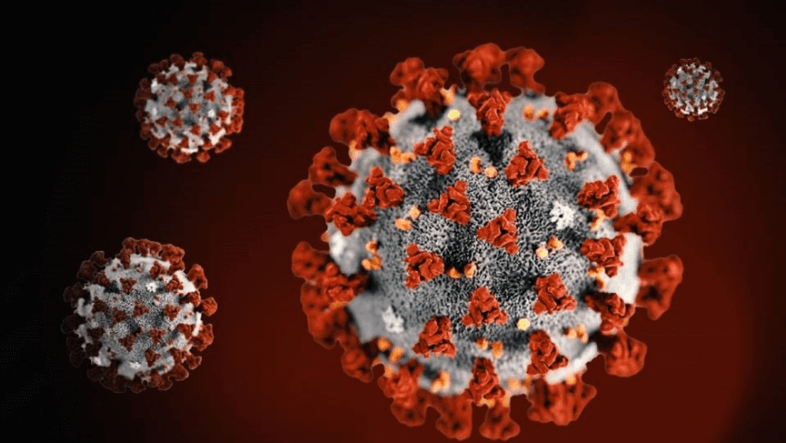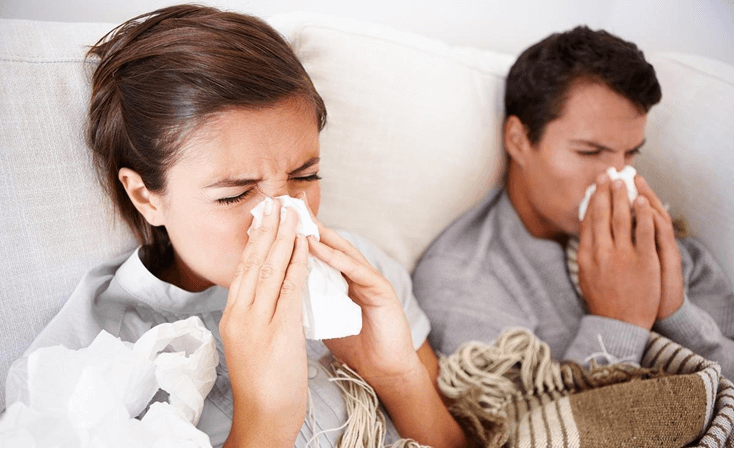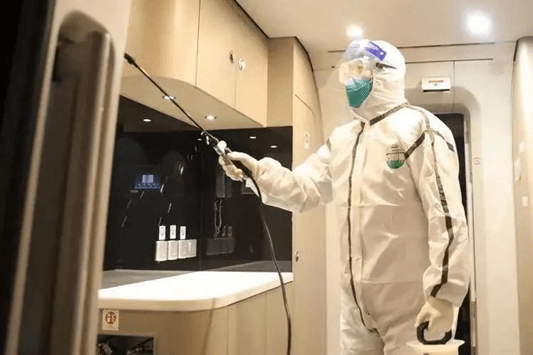
How to distinguish between new coronavirus pneumonia and influenza?
Influenza symptoms are mainly fever, headache, myalgia, and general discomfort. The body temperature can reach 39 ~ 40 ° C, and there may be chilly feeling and chills. Many are accompanied by systemic symptoms such as muscle soreness, fatigue, and loss of appetite. A dry cough, runny nose, and discomfort behind the sternum. Face flushed, conjunctiva congestion. Partially characterized by vomiting, abdominal pain, and diarrhea, it is common in children infected with influenza B. The course of patients without complications was self-limiting, and the body temperature returned to normal after 3 to 4 days of onset, and systemic symptoms improved, but cough and physical recovery often took 1 to 2 weeks.
Pneumonia is the most common complication of influenza. Other complications include nervous system damage, heart damage, myositis, rhabdomyolysis syndrome, and septic shock.

According to the existing case data, the new coronavirus pneumonia is mainly manifested by fever, dry cough, and fatigue. A few patients have upper respiratory and digestive symptoms such as nasal congestion, runny nose, and diarrhea. Severe cases often have dyspnea after 1 week. In severe cases, they quickly progress to acute respiratory distress syndrome, septic shock, difficult to correct metabolic acidosis, coagulation dysfunction, and multiple organ failure. It is worth noting that in the course of severe and critically ill patients, there can be moderate to low fever, even without obvious fever. Mild patients showed only low fever, mild fatigue, and no pneumonia.

I have respiratory symptoms. How can I tell if I have new coronavirus pneumonia?
Based on current epidemiological investigations, the incubation period is 1-14 days, mostly 3-7 days. Fever, fatigue, dry cough are the main symptoms. A few patients are accompanied by occlusion, runny nose, sore throat, myalgia and diarrhea. Severe patients develop dyspnea or hypoxemia in the first week after onset, and severe patients rapidly progress to acute respiratory failure (acute respiratory distress syndrome), sepsis and multiple organ failure. It is worth noting that some patients have mild onset symptoms, no fever, and no pneumonia. Most patients are mild. The prognosis is good, and a few patients are critically ill and even die.
During the epidemic, if fever occurs, you should report to the village (neighborhood) committee or medical and health institution in time, and cooperate with relevant investigation, diagnosis and treatment. During the consultation, a surgical surgical mask or N95 mask should be worn throughout the visit. When you visit a doctor, you should tell the truth about your illness and previous medical treatment, especially the doctor's recent travel and residence history, contact history with patients with new coronavirus pneumonia or asymptomatic infection, and animal contact history.
If a suspected case of new coronavirus pneumonia is diagnosed, it will be admitted to hospital for isolation and treatment. At the same time, samples of pharyngeal swabs, sputum and other samples were collected for new coronavirus detection, and blood samples were taken for serum new coronavirus-specific antibody detection. If any test result is positive, it is diagnosed as a confirmed case of neocoronavirus pneumonia.

Who are susceptible to new coronavirus pneumonia?
1. Older people
Focusing on the current "age distribution of people infected with neocoronavirus", the proportion of "elderly people" is the largest, and the prevalence and mortality of elderly patients belong to the "largest share of age distribution". Relatively speaking, the physical capacity of the elderly population is in a declining stage, and their organ capacity and immunity are lower than those of young people. Therefore, they are more likely to be "beaten by the new crown virus", and the risk of disease is naturally higher.
2. Crowds in "populated places"
For the "new coronavirus", the transmission mode is more "droplet" infection. Therefore, where there are many people, the risk of infection with the "new coronavirus" is naturally higher. In closed, air-smooth, and densely populated places, "virus transmission" is more likely to occur. There are more people and more viruses. Smaller the space, the larger the number of virus units. This way, the risk of infection will naturally increase .

3. People with “certain underlying diseases”
According to data reports from official media, it was found that a large part of the publicly reported "severe new coronavirus pneumonia" patients belonged to patients with respiratory diseases, hypertension, diabetes, liver cirrhosis and other problems; severe underlying diseases Of the population also belongs to the "new crown susceptible crowd" and needs to be focused on.
4.People with bad living habits and low autoimmunity
I don’t like sports in my daily life. I usually sit, smoke, and drink for a long time. It is easy to catch a cold from people nearby, indicating that “immunity is relatively low.” This group of people is also susceptible to the new crown virus. This group of people needs to adjust their lifestyles and eating patterns, exercise more, eat and sleep in a balanced arrangement, and strengthen their defenses against viruses. In addition, children, pregnant women, and medical staff who are in contact with patients are also susceptible groups. They need to be controlled and to avoid being attacked by the epidemic.